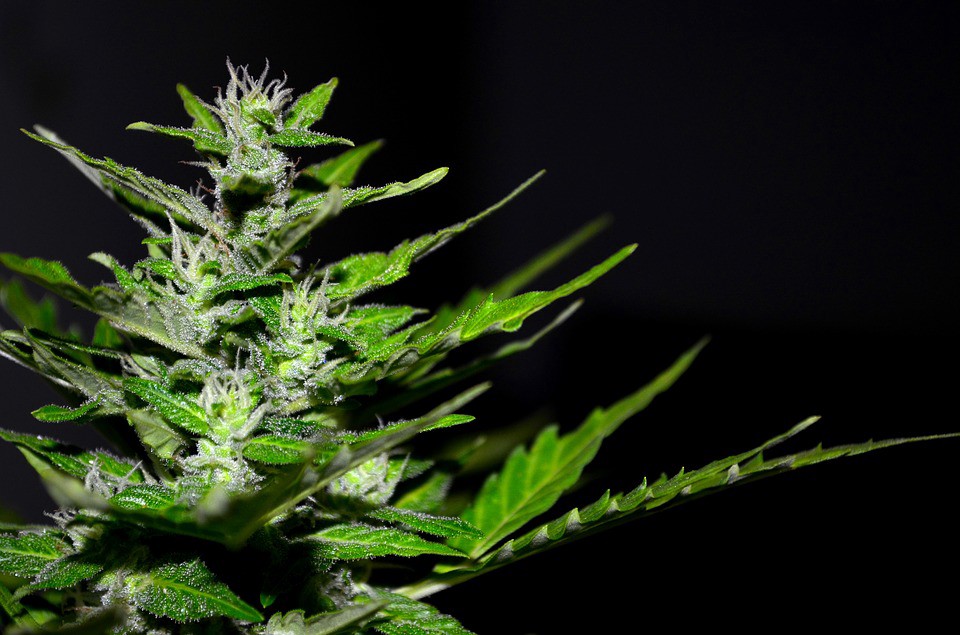
Democratic gubernatorial candidate Phil Murphy hopes to add his home state of New Jersey to that list should he win November’s governor’s election. His opponent in the race, who is also the current Lieutenant Governor, Kim Guadagno, opposes the legalization of recreational marijuana.

In November 2012, Colorado and Washington residents voted to become the first two states to legalize recreational marijuana. Since then, Alaska, California, Maine, Massachusetts, Nevada and Oregon have followed suit with legislation legalizing the popular drug. Democratic gubernatorial candidate Phil Murphy hopes to add his home state to that list should he win November’s governor’s election. His opponent, Lt. Gov. Kim Guadagno, opposes the legalization of recreational marijuana. Her opposition partially stems from U.S. Attorney General Jeff Sessions’ opposition to the drug.
“We do have a big problem with legalizing marijuana, and that is that the attorney general of the United States said that he would not accept that,” Guadagno said during a primary debate. “And so as a former federal prosecutor, I think we would have some real problems in New Jersey if we did legalize it.”
Murphy disagrees.
“God knows we need every penny we can find,” Murphy told a town hall crowd in Lambertville in February. “That’s $300 million to $500 million we don’t have at the moment that we could use.”
Murphy’s figures are coming from a joint study conducted by New Jersey Policy Perspective and New Jersey United for Marijuana Reform that determined the state could accrue about $300 million annually from marijuana’s sales tax revenue, assuming it was taxed at just 25 percent. To put that in perspective, marijuana is taxed even higher than that in other states. For instance, the tax rate on recreational marijuana is 27.9 percent in Colorado and 37 percent in Washington. However, some states charge less, such as Oregon, which levies a 17 percent tax rate on legal pot, or California, which charges 15 percent. (Californians for Responsible Marijuana Reform thinks the state can bring in a whopping $1 billion in revenue from taxing legal pot.)
But it’s not all simply dollars and cents. According to an American Auto Association report, the percentage of drivers who were high on marijuana during fatal accidents in Washington State more than doubled between 2013 and 2014, from 8 to 17 percent, which is about the time Washington legalized recreational marijuana. (Possession of marijuana in Washington became legal in December 2012, while the first retail marijuana store in the state opened its doors in July 2014.)
Additionally, there is still some debate to whether marijuana is a gateway drug. The National Institute on Drug Abuse says “some research suggests that marijuana use is likely to precede use of other licit and illicit substances and the development of addiction to other substances.”
The study says, more specifically, that marijuana can “‘prime’ the brain for enhanced responses to other drugs.” (This implies causation rather than just correlation) although, according to the study, so do alcohol and nicotine, both of which are legal. The same study also adds “the majority of people who use marijuana do not go on to use other, ‘harder’ substances.”
However, other studies say the opposite.
“There is no conclusive evidence that the drug effects of marijuana are causally linked to the subsequent abuse of other illicit drugs,” concluded researchers at the Institute of Medicine in a 1999 study.
Additionally, a 2014 study published by the Journal of the American Medical Association, deaths attributable to both prescription opiates and heroin fell by 20 percent within a year following medicinal marijuana legalization and by 33 percent within six years.
Overall, the study found that “states with medical cannabis laws had a 24.8 percent lower mean annual opioid overdose mortality rate compared with states without medical cannabis laws.”
Lastly, a report from the Netherlands Institute of Mental Health and Addiction concluded “there is no physically determined tendency towards switching from marijuana to harder substances. Social factors, however, do appear to play a role. The more users become integrated in an environment (‘subculture’) where, apart from cannabis, hard drugs can also be obtained, the greater the chance that they may switch to hard drugs.”









